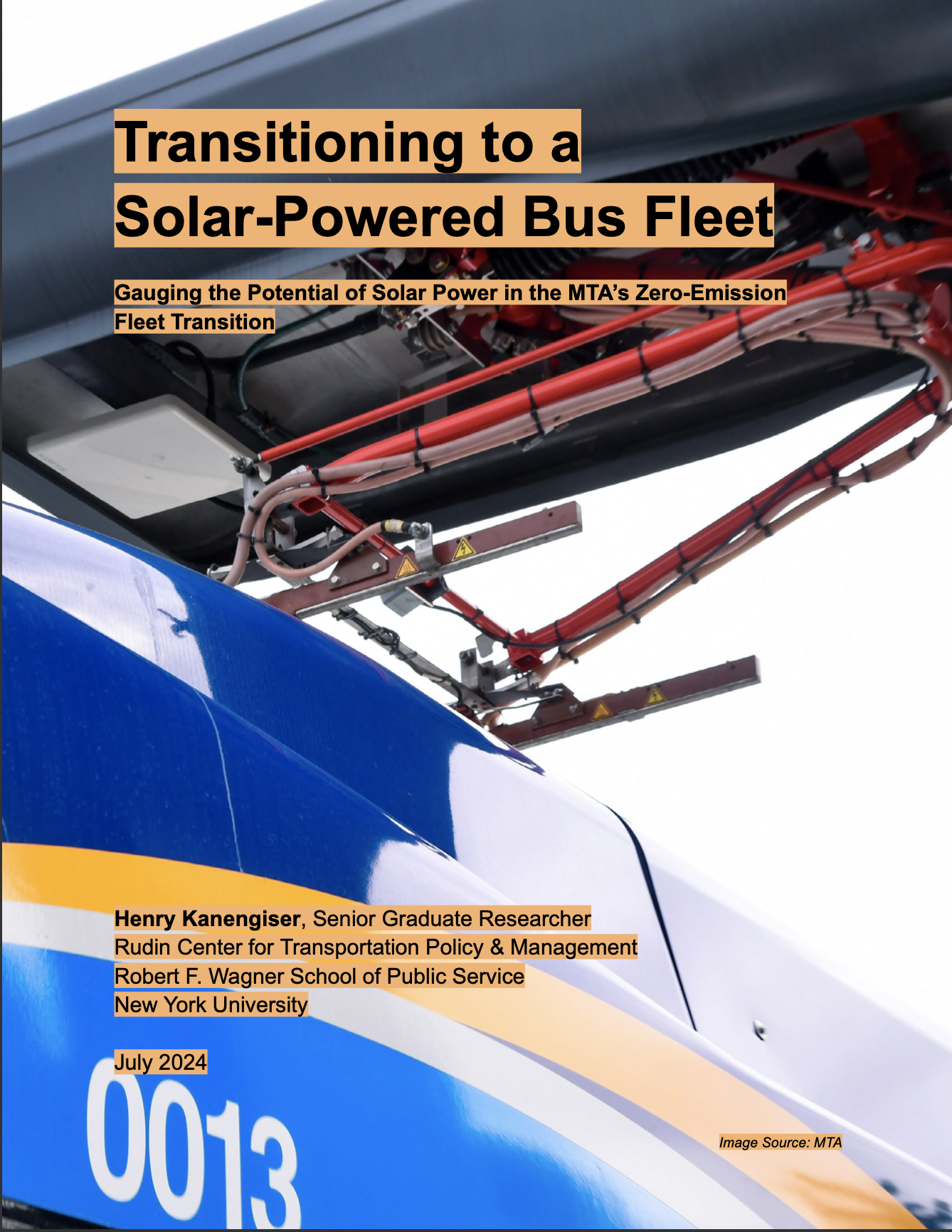Transitioning to a Solar-Powered Bus Fleet: Gauging the Potential of Solar Power in the MTA’s Zero-Emission Fleet Transition
Recognizing the urgency of a changing climate, the Metropolitan Transportation Authority (MTA) has set ambitious goals to reduce its carbon footprint. On Earth Day 2023, the MTA announced a goal of reducing its greenhouse gas emissions by 85% by 2040. To achieve this goal, the agency proposed a three-pronged approach:
- Update facilities to reduce fossil fuel use and energy consumption overall.
- Use energy efficiently with contemporary energy management and storage strategies.
- Transition its fleets, particularly buses, to electric-powered vehicles.
At the center of this emissions goal is the critical task of electrifying the MTA’s bus fleet of 5,900 buses by 2040. This is a major undertaking (no North American city has electrified a bus fleet at this scale, though many agencies are currently making this transition) and requires significant investment to make it a reality. The MTA is starting from near zero: approximately 0.1% of bus travel was powered by electric batteries in 2022. The MTA estimates that an all-electric bus fleet would require a new 262 MW of power capacity to meet its daily peak energy demand (the equivalent of meeting 12 small towns’ daily peak power demand), an entirely new bus fleet, and significantly renovated bus depots. The costs of this transition are not publicly available, but are assumed to be substantial, and the indefinite pause on congestion pricing may impact the timeline for electrification. Starting in the 2025-2029 capital program, the MTA plans to begin rapidly expanding its electric fleet and updating its bus depots to accommodate in-depot charging.
The roadmap to this goal has yet to be announced in detail, but the MTA has committed to and begun developing major projects and studying new potential pathways forward. One of these ideas is about the role of renewable energy such as solar; the MTA has discussed installing large-scale solar panel arrays on its assets to support both the facilities and fleet transition initiatives, and has since been cited in its Earth Day press release as well as in several major planning documents.
While this transition represents a generational overhaul of the MTA’s bus operations and infrastructure, it poses an opportunity to combine these necessary changes with some ambitious ones as well. The electrical demand of these buses is substantial; upgrades to bus depots present an opportunity for the MTA to generate some of that electricity in-house through solar panels.
Installing rooftop and parking lot solar panels, combined with storage at MTA bus depots, is an exciting idea with significant potential to propel the MTA’s fleet electrification program forward. This analysis explores the opportunities of solar power investments that would likely benefit the MTA as it develops its forthcoming capital plans.
By Henry Kanengiser, Senior Graduate Researcher
Rudin Center for Transportation Policy & Management
Robert F. Wagner School of Public Service
New York University
Cover Image: MTA on Flickr
